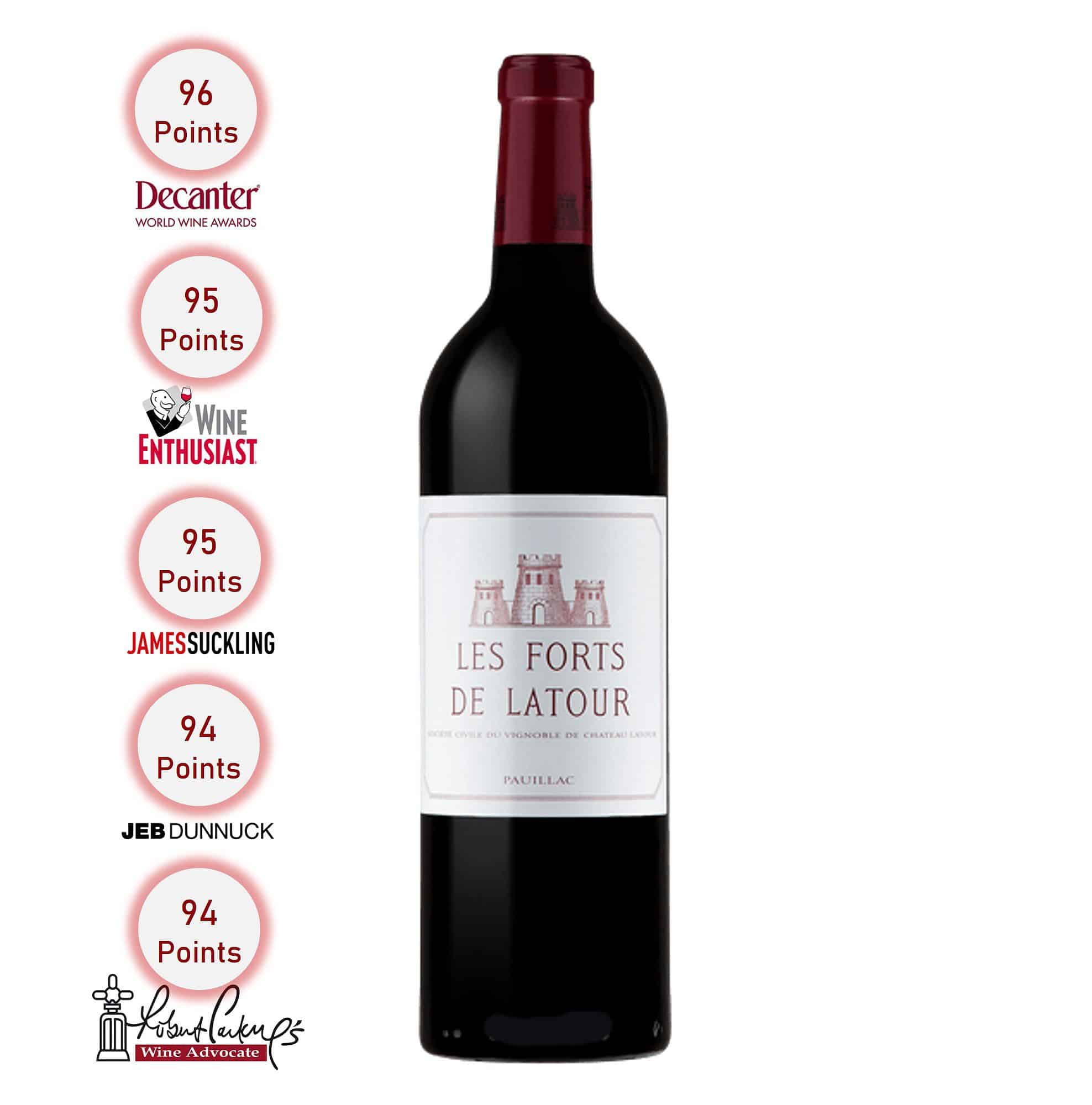75cl / 12.5%
“The second wine of the estate is the Les Forts De Latour and this beauty is better than most estate grand vin… this straight up classic Pauillac is loaded with notions of red and black currants, lead pencil shavings, roasted coffee, graphite, and Asian spices.
Deep, medium to full-bodied, impressively concentrated, and layered, it’s a seriously good wine that’s going to continue drinking beautifully for two to three decades.”
~ Jeb Dunnuck
RM1,820.00
3 in stock
The second wine of the estate, Les Forts De Latour, is produced with the same meticulous care as the Grand Vin, both in the vineyard and in the winery. The only notable difference, apart from the origin of the grapes, is the proportion of new barrels (50 to 60%) used in the maturing stage. The blend for Forts de Latour can vary from one year to the next but there is always a higher proportion of Merlot (25 to 30%) compared to the Grand Vin. The first vintage of Forts de Latour was in 1966 and constant work in the vineyard and in the cellars has resulted in achieving the level of a top Medoc classified growth.
Colour: Deep garnet-purple
Nose: The nose needs a little coaxing to reveal expanding scents of blackcurrant pastilles, baked plums and boysenberries with suggestions of wood smoke, fragrant earth, cast-iron pan and charcuterie plus a faint waft of black truffles.
Palate: Medium-bodied, the earthy/savory palate has loads of lively black fruit with a refreshing line and firm, grainy tannins, finishing on a lingering ferrous note. (WA) Drinking windor 2018 – 2048.
Grape Varieties: 50% Cabernet Sauvignon, 42% Merlot, and the balance Petit Verdot
Awards: 96pts – Decanter; 95pts – Wine Enthusiast; 95pts – James Suckling; 94pts – Jeb Dunnuck; 94pts – Wine Advocate-Parker; 92pts – Wine Spectator
Château Latour is one of Bordeaux’s – and the world’s – most famous wine producers. It is situated in the southeast corner of the Pauillac commune on the border of Saint-Julien, in the Médoc region. Rated as a First Growth in the 1855 Bordeaux Classification, it has become one of the most sought-after and expensive wine producers on the planet, and produces powerfully structured Cabernet Sauvignon-dominant wines capable of lasting many decades. Latour makes two other wines: Les Forts de Latour and Pauillac de Latour, both of which are made from younger vines.

| Brand | |
|---|---|
| Return Policy | Non-Returnable : This product is non-returnable due to exclusivity/consumable nature of the product. |
| SID | D02B |
| Country | Bordeaux, France |
| Product Type | Red |
| Grape Variety | Cabernet Sauvignon |
Discover our diverse range of flavourful alternatives, ready to surprise and delight your palate.
Industry-leading security powered by iPay88 & Stripe.
Besides Visa & Mastercard, we also accept T&G, Grab, and other eWallets
Unleash your passion for wine and spirits! Join our community of enthusiasts for insider perks, early access to new arrivals, free tastings, exclusive events, discounts, and unforgettable wine experiences.
Become a MyWine Club member today!
A curated website for fine wines, spirits, cigars, food and unique dining experiences too.
Click HERE to find out how to list your event on DiineOut.com or please contact our Hotline (Whatsapp Only): +6018-201 2821.